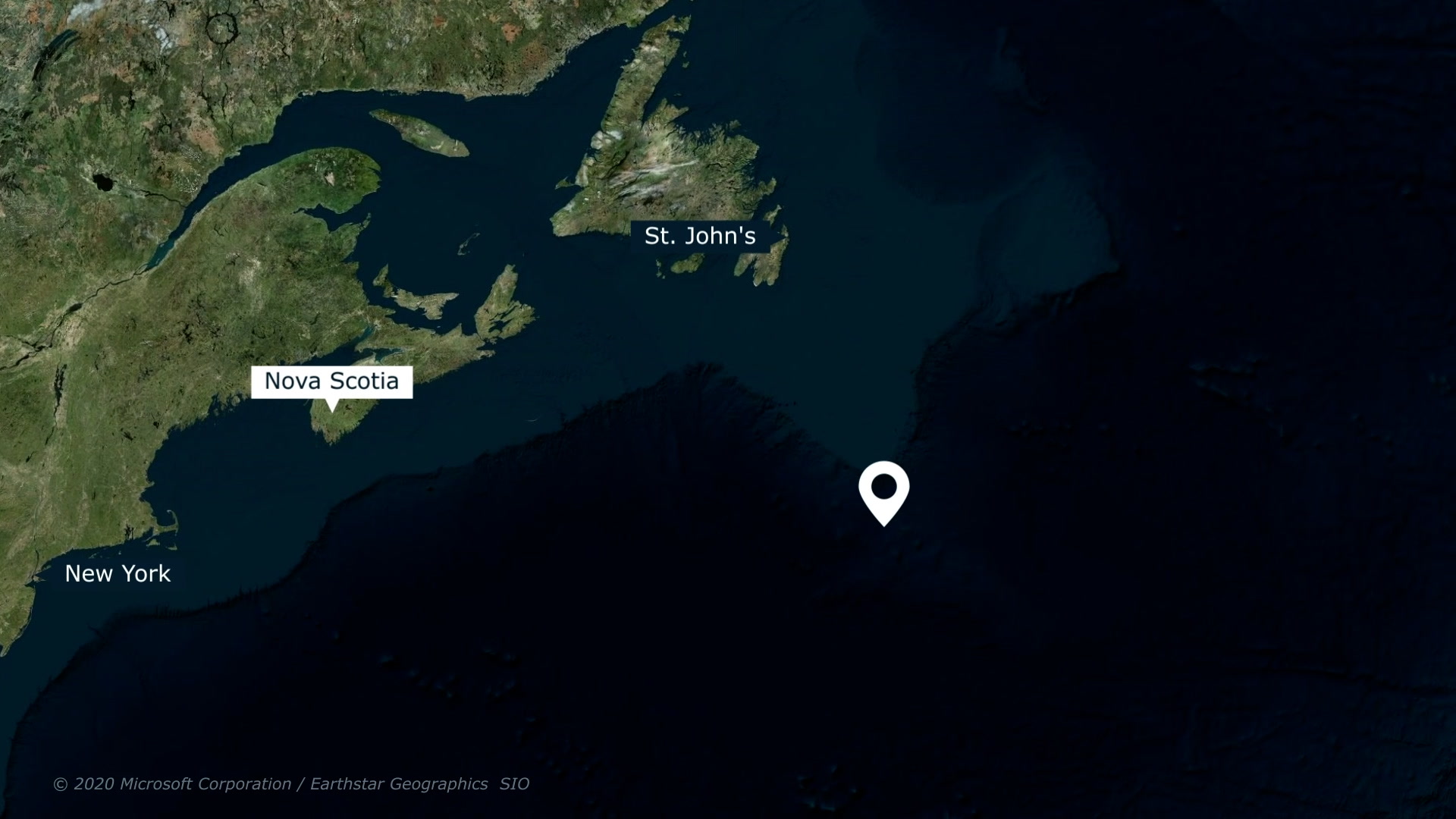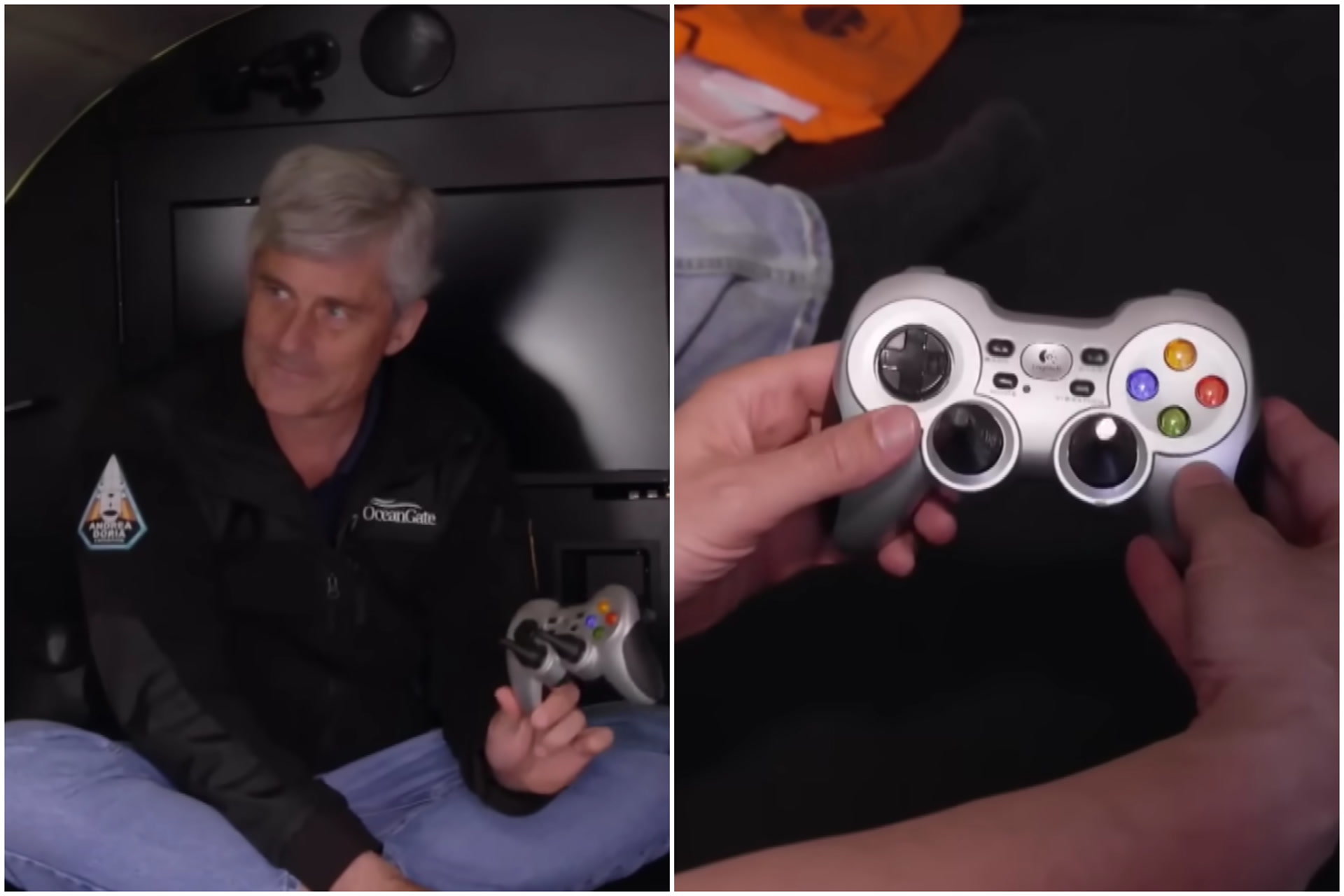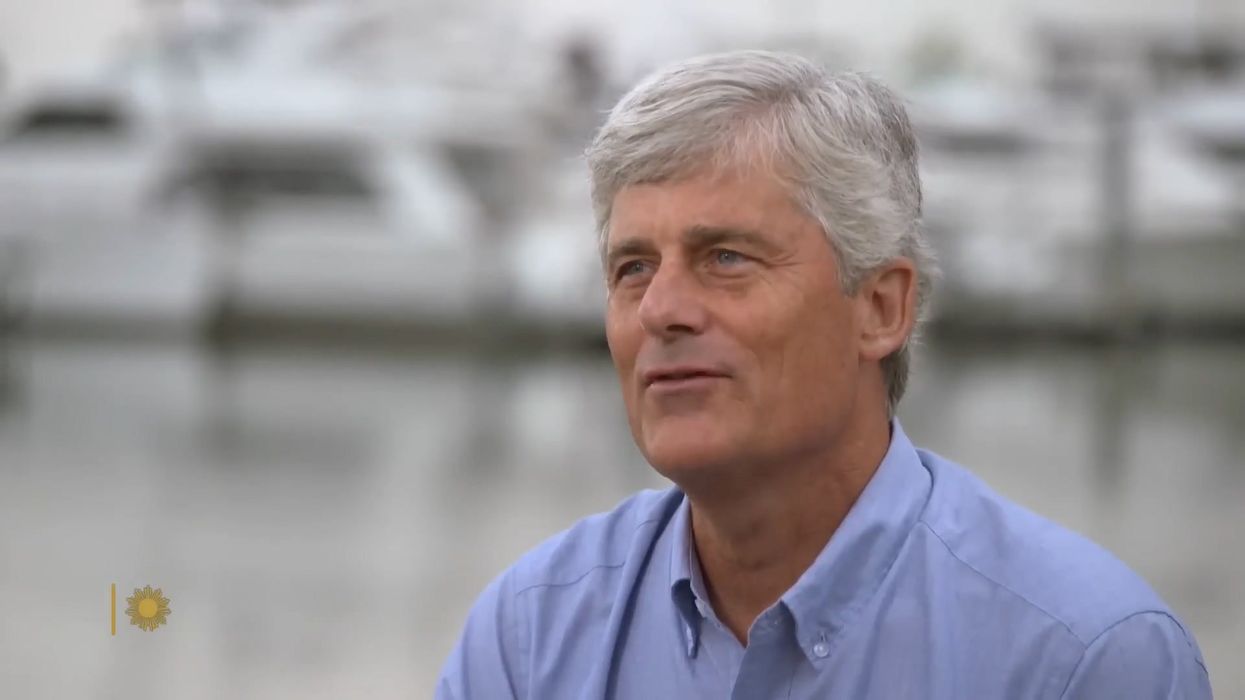Harriet Brewis
Jun 21, 2023
'Missing' OceanGate CEO reveals Titanic submersible built 'with camping parts'
content.jwplatform.com
The tiny submersible which went missing during an excursion to the Titanic on Sunday relies on some pretty dated tech, it has emerged.
The 22ft-long Titan vessel, owned by OceanGate Expeditions, lost communication with tour operators while around 435 miles south of St John’s, Newfoundland, with five people on board.
They include British billionaire adventurer Hamish Harding, French submersible pilot Paul-Henry Nargeolet, and OceanGate’s CEO Stockton Rush.
And despite it costing a staggering $250,000 to get on board the tiny sub, Rush himself has admitted that it isn’t equipped with the most sophisticated gear.
Sign up for our free Indy100 weekly newsletter
In an interview with CBS reporter David Pogue earlier this year, the tour company founder revealed that the device used to control the Titan was a “game controller” from the 2000s.
The “controller” in question was shown to be a modified Logitech gamepad controller – one that is compatible with systems dating back to the 1990s. The most recent operating service it was compatible with was reportedly Windows XP.
\u201ci am losing my mind, the sub that went missing was controlled with a shitty logitech controller from like 2005\u201d— HORSE WHOMST REVILES (@HORSE WHOMST REVILES) 1687224474
Rush added that the system used to move the submersible was so simple a child could do it.
"We only have one button, that's it,” he told his guest. “It should be like an elevator, it shouldn't take a lot of skill.”
Pogue then pointed out to his host: “The Titan is the only five-person sub in the world that can reach Titanic depths 2.4 miles below the sea, it's also the only one with a toilet – sort of. And yet I couldn't help noticing how many pieces of this sub seemed… improvised.”
Rush calmly responded that the submersible featured a number of “off-the-shelf” components, including some overhead lights that he bought from “Camper World” and construction pipes as ballasts.
However, he stressed that the most crucial components were top of the range and that OceanGate had worked with NASA, Boeing and the University of Washington to create the Titan’s pressure vessel.
Nodding to that, he added: “Everything else can fail. Your thrusters can go, your lights can go. You're still going to be safe.”

Still, Pogue, who was invited by Rush to join one of the Titan’s trips, ominously told viewers: “I was a little nervous – an experimental submersible vessel that has not been approved or certified by any regulatory body and could result in physical injury, disability, emotional trauma, or death. Where do I sign?”
In fact, he did end up signing and despite a few false starts, Pogue made it down to the Titanic.
It was also not Pogue’s first discussion with Rush about the risks involved in undertaking such a rare excursion.
In a November 2022 episode of his ‘Unsung Science’ podcast, the CBS journalist spoke to Rush about safety.
“You know, at some point, safety is just pure waste,” Rush told Pogue.
“I mean, if you just want to be safe, don’t get out of bed, don’t get in your car, don’t do anything.
“At some point, you’re going to take some risk, and it really is a risk-reward question.
“I think I can do this just as safely by breaking the rules.”

It all comes amid news that a former employee of OceanGate had raised concerns over “safety and quality control issues regarding the Titan to OceanGate executive management”, according to court filings.
David Lochridge, OceanGate’s former director of marine operations, claimed in the August 2018 court document he was wrongfully fired after flagging worries about the company’s alleged “refusal to conduct critical, non-destructive testing of the experimental design”.
After “issues of quality control” with Titan were raised, the filings say Mr Rush asked Mr Lochridge to conduct a “quality inspection” report on the vessel.
During this process, Lochridge “identified numerous issues that posed serious safety concerns” but he was allegedly “met with hostility and denial of access” to necessary documents before later being fired.
The document claims he became concerned about a “lack of non-destructive testing performed on the hull of the Titan”, and that he “stressed the potential danger to passengers of the Titan as the submersible reached extreme depths”.

Still, there remains hope.
Noises have been detected from the search area of the missing deep-sea vessel, which has just 40 hours of oxygen left.
The US Coast Guard on Wednesday morning said: “Canadian P-3 aircraft detected underwater noises in the search area. As a result, ROV (remote operating vehicles) operations were relocated in an attempt to explore the origin of the noises.
“Those ROV searches have yielded negative results but continue.
“Additionally, the data from the P-3 aircraft has been shared with our U.S. Navy experts for further analysis which will be considered in future search plans.”
The Explorers’ Club, of which the billionaire Harding is a founding member, shared an upbeat message on Wednesday morning.
President Richard Garriot de Cayeux said in a statement: “There is cause for hope, that based on data from the field, we understand that likely signs of life have been detected at the site.
“They precisely understand the experienced personnel and tech we can help deploy… We believe they are doing everything possible with all the resources they have.”
Have your say in our news democracy. Click the upvote icon at the top of the page to help raise this article through the indy100 rankings.
Top 100
The Conversation (0)














